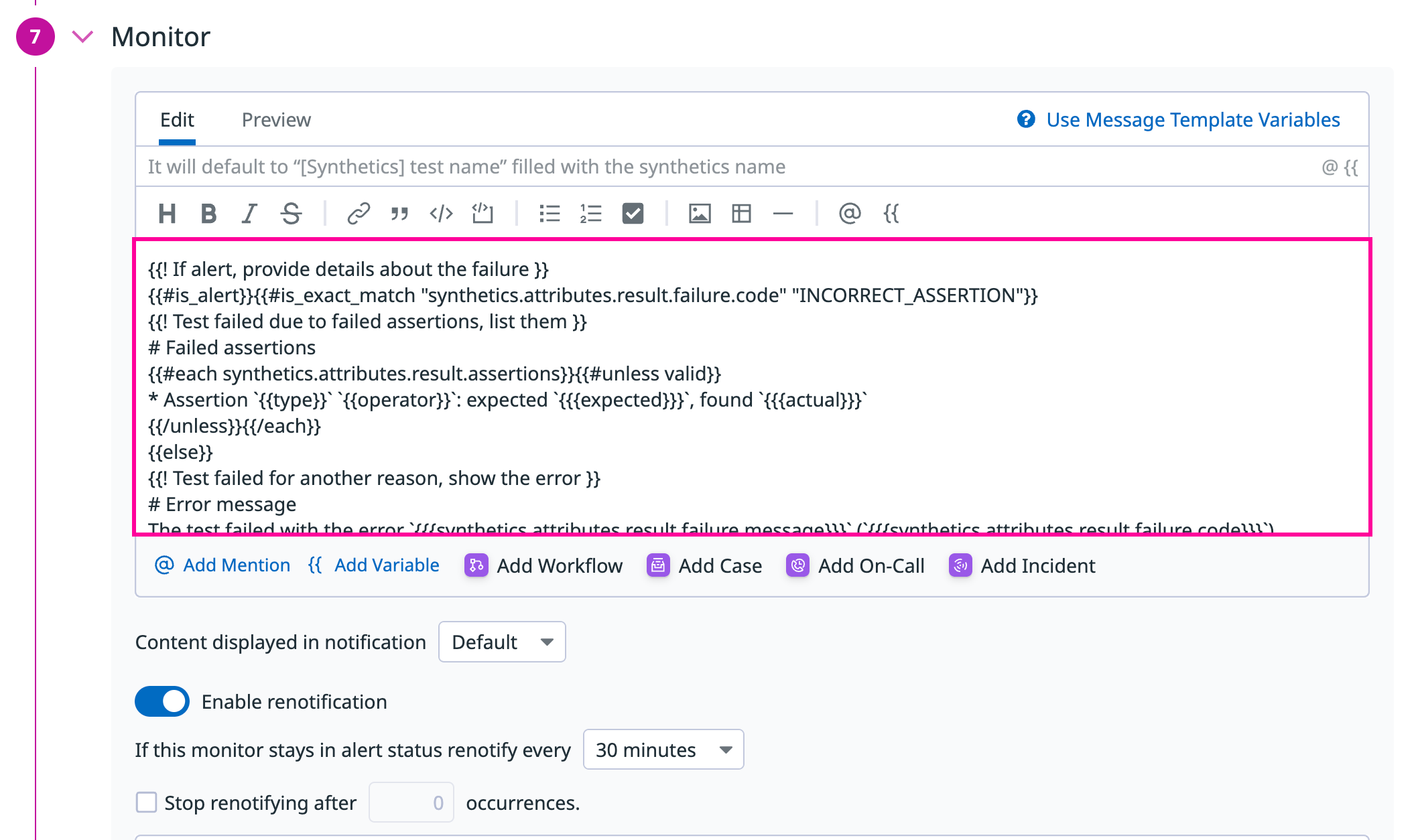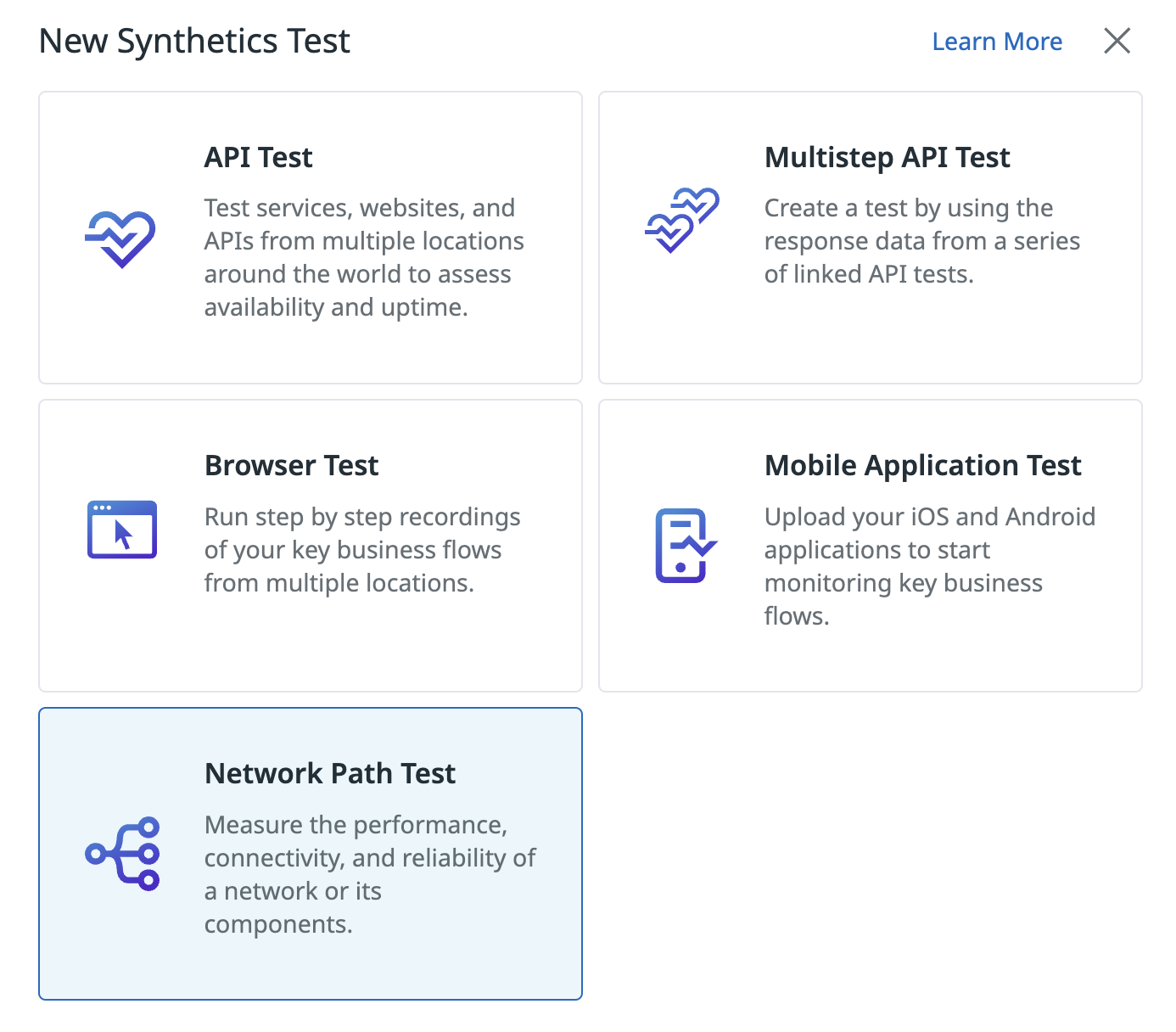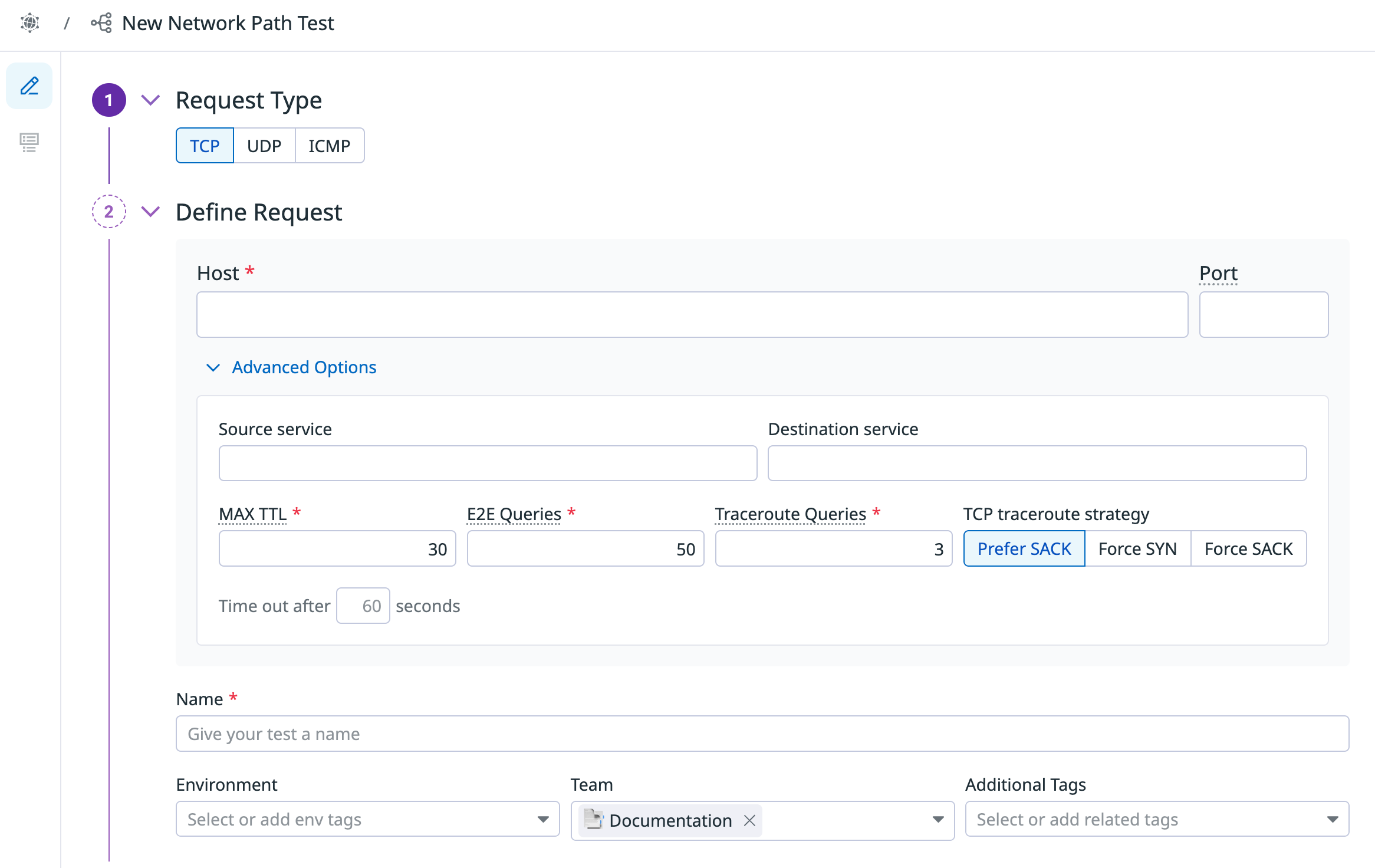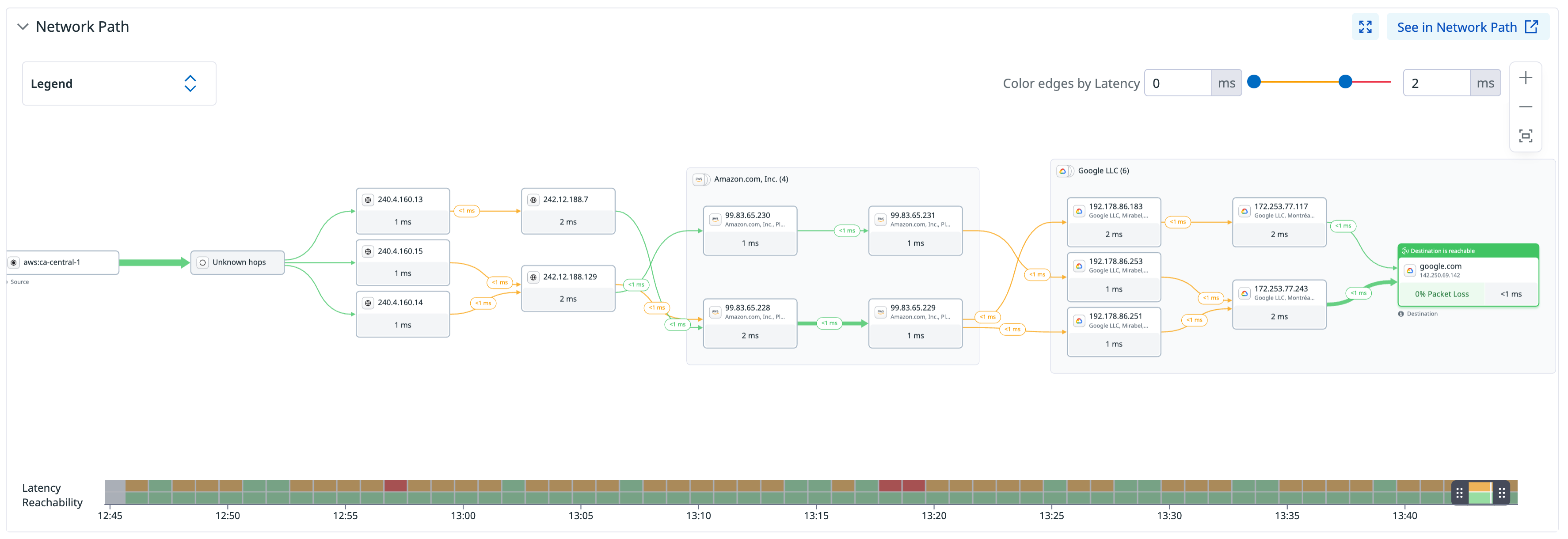- Essentials
- Getting Started
- Agent
- API
- APM Tracing
- Containers
- Dashboards
- Database Monitoring
- Datadog
- Datadog Site
- DevSecOps
- Incident Management
- Integrations
- Internal Developer Portal
- Logs
- Monitors
- OpenTelemetry
- Profiler
- Search
- Session Replay
- Security
- Serverless for AWS Lambda
- Software Delivery
- Synthetic Monitoring and Testing
- Tags
- Workflow Automation
- Learning Center
- Support
- Glossary
- Standard Attributes
- Guides
- Agent
- Integrations
- Developers
- Authorization
- DogStatsD
- Custom Checks
- Integrations
- Build an Integration with Datadog
- Create an Agent-based Integration
- Create an API-based Integration
- Create a Log Pipeline
- Integration Assets Reference
- Build a Marketplace Offering
- Create an Integration Dashboard
- Create a Monitor Template
- Create a Cloud SIEM Detection Rule
- Install Agent Integration Developer Tool
- Service Checks
- IDE Plugins
- Community
- Guides
- OpenTelemetry
- Administrator's Guide
- API
- Partners
- Datadog Mobile App
- DDSQL Reference
- CoScreen
- CoTerm
- Remote Configuration
- Cloudcraft (Standalone)
- In The App
- Dashboards
- Notebooks
- DDSQL Editor
- Reference Tables
- Sheets
- Monitors and Alerting
- Watchdog
- Metrics
- Bits AI
- Internal Developer Portal
- Error Tracking
- Change Tracking
- Service Management
- Actions & Remediations
- Infrastructure
- Cloudcraft
- Resource Catalog
- Universal Service Monitoring
- Hosts
- Containers
- Processes
- Serverless
- Network Monitoring
- Cloud Cost
- Application Performance
- APM
- APM Terms and Concepts
- Application Instrumentation
- APM Metrics Collection
- Trace Pipeline Configuration
- Correlate Traces with Other Telemetry
- Trace Explorer
- Recommendations
- Code Origin for Spans
- Service Observability
- Endpoint Observability
- Dynamic Instrumentation
- Live Debugger
- Error Tracking
- Data Security
- Guides
- Troubleshooting
- Continuous Profiler
- Database Monitoring
- Agent Integration Overhead
- Setup Architectures
- Setting Up Postgres
- Setting Up MySQL
- Setting Up SQL Server
- Setting Up Oracle
- Setting Up Amazon DocumentDB
- Setting Up MongoDB
- Connecting DBM and Traces
- Data Collected
- Exploring Database Hosts
- Exploring Query Metrics
- Exploring Query Samples
- Exploring Database Schemas
- Exploring Recommendations
- Troubleshooting
- Guides
- Data Streams Monitoring
- Data Jobs Monitoring
- Data Observability
- Digital Experience
- Real User Monitoring
- Synthetic Testing and Monitoring
- Continuous Testing
- Product Analytics
- Software Delivery
- CI Visibility
- CD Visibility
- Deployment Gates
- Test Optimization
- Code Coverage
- PR Gates
- DORA Metrics
- Feature Flags
- Security
- Security Overview
- Cloud SIEM
- Code Security
- Cloud Security
- App and API Protection
- Workload Protection
- Sensitive Data Scanner
- AI Observability
- Log Management
- Administration
Network Path Testing
Overview
Network Path Testing in Synthetic Monitoring gives you complete visibility into the routes your synthetic tests follow. You can pinpoint where failures happen, whether in applications, on-premises networks, or with ISPs. This accelerates root cause analysis, enables proactive issue detection, and triggers actionable alerts when tests fail. It also provides uptime data to help you measure and communicate the value of your network reliability investments.
Running Network Path tests from managed locations lets you perform TCP, UDP, and ICMP checks on your application. Visualize the Network Path packets follow when executing queries from different global locations.
For information on billing for Network Path Testing in Synthetic Monitoring, see the pricing page.
Test creation
- In Datadog, hover over Digital Experience in the left-hand menu and select Tests (under Synthetic Monitoring & Testing).
- Click New Test > Network Path Test.
Test configuration
- Choose your request type (TCP, UDP, or ICMP) and specify the host or URL to query. Port information is optional.
- Name your test.
- Optional: Configure advanced options:
- Source service: The label displayed for the source host in the Network Path visualization.
- Destination service: The label displayed for the destination host in the Network Path visualization.
- Max TTL: Maximum time-to-live (maximum number of hops) for outgoing probe packets. Defaults to 30 hops.
- E2E Queries: Number of packets sent to the destination to measure packet loss, latency, and jitter. Defaults to 50.
- Traceroute Queries: Number of traceroute path tracings to perform. Results are aggregated in each test run details panel. Defaults to 3.
- TCP traceroute strategy (TCP tests only): Choose between Selective Acknowledgement (SACK) and Synchronize (SYN) traceroute strategies. SACK and Force SACK more closely mimic modern application traffic.
- Optional: Add Tags to your test, including environment tags. Use tags to filter your Synthetic tests on the Synthetic Monitoring & Continuous Testing page.
Define assertions to determine the expected results for your test. At least one assertion is required.
Type Operator 1 Operator 2 Value type latency avg, max, min is,<,<=,>,>=int packet loss is,<,<=,>,>=int (0 to 100) jitter is,<,<=,>,>=float network hops avg, max, min is,<,<=,>,>=int Select the locations from which to run your test. Network Path tests can run from managed locations to test your endpoints from global locations.
Datadog’s out-of-the-box managed locations allow you to test public-facing websites and endpoints from regions where your customers are located.
AWS:
Americas Asia Pacific EMEA Canada Central Hong Kong Bahrain Northern California Jakarta Cape Town Northern Virginia Mumbai Frankfurt Ohio Osaka Ireland Oregon Seoul London São Paulo Singapore Milan Sydney Paris Tokyo Stockholm GCP:
Americas Asia Pacific EMEA Dallas Tokyo Frankfurt Los Angeles Oregon Virginia Azure:
Region Location Americas Virginia The Datadog for Government site (US1-FED) uses the following managed location:
Region Location Americas US-West Set the test frequency to determine how often Datadog runs your Network Path test. Scheduled tests ensure your most important endpoints remain accessible to your users.
Define alert conditions and configure the test monitor for your Network Path test.
Define alert conditions
Set alert conditions to determine the circumstances under which you want a test to fail and trigger an alert.
Alerting rule
When you set the alert conditions to: An alert is triggered if any assertion fails for X minutes from any n of N locations, an alert is triggered only if these two conditions are true:
- At least one location was in failure (at least one assertion failed) during the last X minutes;
- At one moment during the last X minutes, at least n locations were in failure.
Configure the test monitor
A notification is sent by your test based on the alerting conditions previously defined. Use this section to define how and what to message your team.
Similar to how you configure monitors, select users and/or services that should receive notifications either by adding an
@notificationto the message or by searching for team members and connected integrations with the dropdown menu.Enter the notification message for your test or use pre-filled monitor messages. This field allows standard Markdown formatting and supports the following conditional variables:
| Conditional Variable | Description |
|---|---|
{{#is_alert}} | Show when the test alerts. |
{{^is_alert}} | Show unless the test alerts. |
{{#is_recovery}} | Show when the test recovers from alert. |
{{^is_recovery}} | Show unless the test recovers from alert. |
{{#is_renotify}} | Show when the monitor renotifies. |
{{^is_renotify}} | Show unless the monitor renotifies. |
{{#is_priority}} | Show when the monitor matches priority (P1 to P5). |
{{^is_priority}} | Show unless the monitor matches priority (P1 to P5). |
Notification messages include the message defined in this section and information about the failing locations. Pre-filled monitor messages are included in the message body section:

Specify how often you want your test to re-send the notification message in case of test failure. To prevent renotification on failing tests, check the option
Stop re-notifying on X occurrences.Click Save Test to save your Network Path test configuration and monitor.
For more information, see Synthetic Monitoring notifications.
View test results
Click on a Network Path test on the Synthetic Tests page to view the Test Details page, which displays comprehensive information about your test:
- Test properties and configuration
- Test history
- Individual test runs
- Aggregated Network Path visualizations across all test runs
The Network Path visualization shows the routes packets take to complete queries during each test run. Drag the health bar handles to adjust the time frame and view a snapshot of end-to-end latency and packet loss for a specific time interval. For more information about how Network Path visualizations are built, see the Network Path documentation.
Changing the health bar does not affect the global time range at the top of the page.
To view details for a specific test run, click on a test run in the table at the bottom of the page. A side panel opens displaying run information, Network Path visualization, and assertion results.
Retention
Network Path Testing data is retained for 30 days.
Further Reading
Additional helpful documentation, links, and articles:





